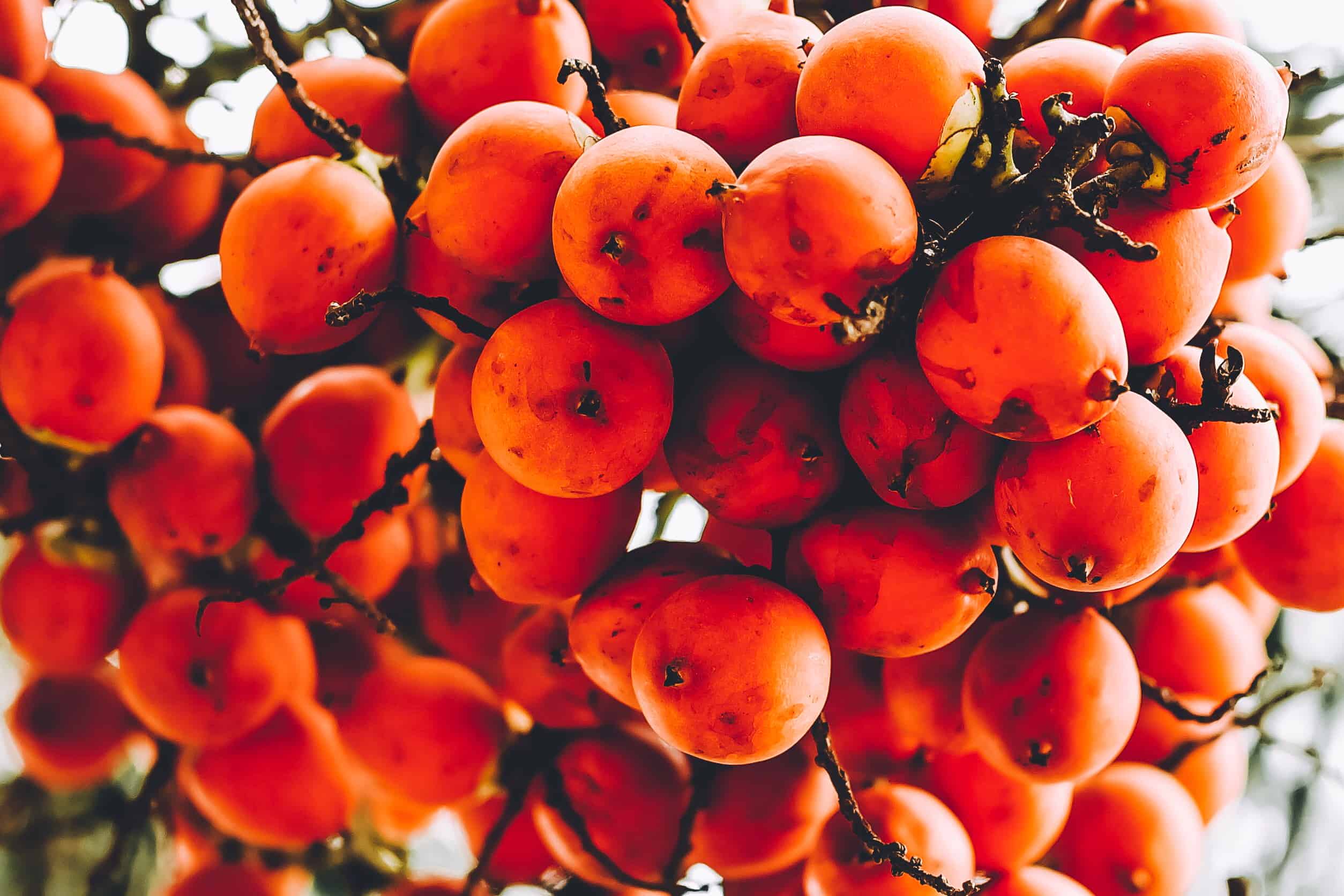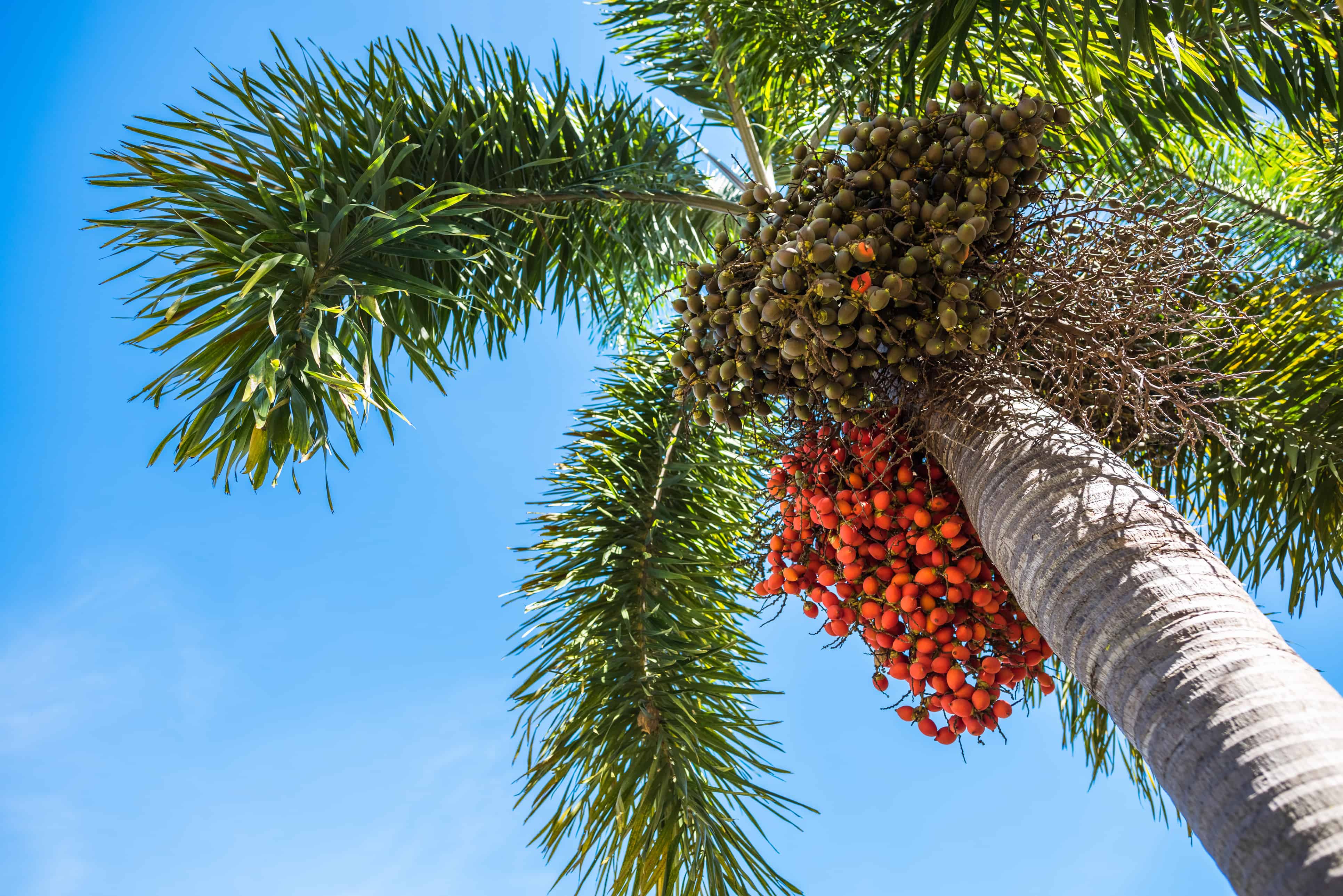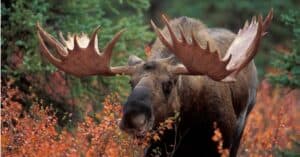The black palm tree is a rare beauty in the plant trade, as it only really grows in very specific regions of Australia. Let’s break down some facts about this interesting palm species and how to grow your own at home.
What is the Black Palm Tree?
Normanbya normanbyi, sometimes referred to as the black palm, is the only species in the monotypic genus of palms called Normanbya. It is not naturalized in many other regions outside of Australia and is indigenous to Queensland, Australia. Only a small portion of the tropical rainforests in the Wet Tropics of Queensland World Heritage Site is home to this species.
The black palm tree resembles the more well-known foxtail palm aesthetically, although it is smaller overall. It is a bottlebrush-like single-stemmed palm with lovely bushy fronds. It can reach a height of 100 feet and has a modest crown of fronds that are about eight feet long each with petioles that are each approximately one foot long. The 80 to 95 whorled leaflets that make up the fronds, each of which can grow to a maximum length of 18 inches and is split longitudinally into about 11 radiating segments, give the fronds their bushy look. The pinnae have fish-shaped dramatically truncated ends and are dark green on the top surface and silvery underneath.
This plant has a panicle, or a cluster of flowers, that emerges from the trunk slightly below the crownshaft. The stemless green blooms, which are clustered in threes and each have one female and two male blossoms, are about 35 inches long. The pistillate blooms contain three sharply recurved stigmas, whereas the staminate flowers have 25 to 40 stamens. Ripe fruits are pink to reddish-brown in hue and about two inches long. They have just one seed inside.
Cassowaries and cockatoos consume the fruits of the black palm. The cockatoos will remove the fruit’s flesh and gnaw into the seeds themselves, preventing them from germinating, in contrast to the cassowary, which consumes the fruit whole and disperses the seed in its droppings, helping to disperse the seeds across the forest. The latter is very important when it comes to the pollination of these trees.
The indigenous occupants of the region where this palm is situated, the Kuku Yalanji people, used the plant for a variety of purposes. For the purpose of creating spears, clapsticks, and digging sticks, the extremely hard timber was split down the length of the trunk. A fiber formed from the crownshafts was used as a thread to connect spearheads to the shafts, tie together traps, and secure cradles. The buds and fresh shoots can also be consumed, as they are edible and nutritious.
The black palm is still uncommon in the palm trade today. However, it is occasionally used for landscaping and indoor decorative purposes. Fresh seeds can be used to cultivate it, and it’s also readily available at many plant nurseries. That being said, those in the United States will have more success online when looking for seeds of this species over finding specimens at local nurseries.

Black palm tree fruits (pictured) are edible and used in cuisine in Australia.
©iStock.com/PUGUN SJ
How to Grow a Black Palm Tree
The black palm tree can be grown outdoors in USDA hardiness zones nine through 11. While these palm trees can grow in a variety of soil types, they prefer wet, loose, well-drained soil with moderate fertility. Constantly damp or wet soils can be troublesome for these plants. It is definitely worth the time to test the drainage before planting if you are unsure of how the soil will drain in the location where you wish to grow your black palm.
Most palm species thrive on soil that is between pH 5.5 and 7.5, which is moderately acidic to slightly alkaline. Most typical garden soils have a pH between 6.0 and 7.0. If you want to grow these evergreen palm trees as large as possible, you should plant them around six feet apart.
In full sun to partial shade, black palm trees will flourish. When planted in arid settings or while this species is young, it tends to prefer partial shade. Choose your planting location for the black palm wisely based on how much sun it can receive.
Start by creating a planting hole that is no deeper than the root ball and at least twice as wide. Better is a hole that is larger. Put the native soil that was taken out of the planting hole around the hole’s perimeter.
It’s worth supplementing the native soil depending on the type, fertility, and porosity of the soil in the planting location. It is also advantageous to thoroughly mix in some good organic matter, such as bagged topsoil, sand, or tiny pebbles at a one-to-one ratio with the soil taken from the planting hole. Consider using some topsoil to help preserve moisture when planting in extremely sandy or quickly draining soil. No soil amendment is required when planting in damp but well-drained and loose soil.
Squeeze or pound on the pot’s sides to dislodge the root ball before removing your black palm from the container it was growing in. The root ball should then be carefully lifted out of the container by firmly grasping the base of the palm. Use snips, a utility knife, or another cutting instrument to cut the container away if the root ball is caught in it.
The top edge of the root ball should be at or just slightly above the ground level when planting. Place the root ball’s top edge three inches above the earth. To get the right planting height, apply additional backfill soil mixture to the bottom of the hole.
After placing your palm in the planting hole, start backfilling the soil mixture around the root ball while holding the trunk straight with one hand and tamping as you go to get rid of air pockets. You can soak the soil once you have filled the hole halfway. After you reach the top edge of the root ball, keep backfilling. Avoid piling any soil on top of the root ball to prevent smothering your black palm.
The planting area should then be thoroughly watered, including the root ball, to a depth equivalent to the root ball’s height. Spread a one-inch layer of pine straw mulch around the planting area to retain moisture and prevent weed development. Mulch should not be piled or placed directly against the base of your palm as this might result in the rot of the bark.
How to Grow a Black Palm Tree as a Houseplant
Potted black palm plants benefit from wet yet well-drained soil. Continuously wet soil usually results in root rot and other dangerous or fatal plant diseases. One should use high-quality potting soil or potting mix and a container with large drainage holes. You can also add 20% perlite or even pumice to the soil mixture to improve drainage.
When switching to a bigger-sized container, pick a container that will accommodate three years of growth. This might suggest that your plant’s root ball is wider than your planting container by eight inches or more.
Also, container color matters. Not only should you choose a container color that complements the black palm tree’s foliage and berries, but you should also consider the design of your home or other nearby structures, as well as the other plants in the area.

Soil (pictured) for black palm trees should be able to stay moist but drain very well.
©Singkham/Shutterstock.com
How to Care for a Black Palm Tree
The black palm tree requires full sun to partial shade. It is quite a cold hardy plant and can survive temperatures that dip toward freezing. As mentioned earlier, it will do well in climates in USDA hardiness zones nine through 11.
The black palm has high water needs and will require regular watering as it grows to maturity. It is a fast-growing plant compared to most other palm tree species.
Outside of the growing instruction and above care requirements, the black palm is extremely tolerant of neglect and does not need much human interference in order to thrive.
How to Propagate Black Palm Trees
You can either gather the seeds yourself or purchase them from a reputable nursery if you want to propagate palm trees indoors. Peat moss, perlite, and sand should be used as part of the potting mixture when planting palm tree seeds. Furthermore, add some horticultural charcoal to the potting mix. By doing this, future root rot can be avoided. Put four to six black palm tree seeds into each pot, covering them with soil that is approximately a quarter-inch thick, and then wrap plastic wrap around the pots to retain moisture. Make holes in the plastic wrap’s top so air can enter.
Every day, mist the pots with water. Every several days, check on the seeds. As little sprouts start to form, take off the plastic wraps and place your seedlings somewhere well-lit. Keep your palms wet but not drenched. You can water the seeds from the exterior of a big pot if the seeds are transplanted inside of it.
Can Black Palm Trees Be Propagated From Cuttings?
Sadly, no. The methods often used for other garden plants cannot be used to propagate most palm trees. Hence, taking a cutting won’t result in the growth of a new palm tree. Only seeds can be used to develop palm trees. However, some species may produce branches that have enough roots of their own and can be propagated with cuttings. However, this action is useless without its own root system. The black palm is one such palm species that cannot be propagated from cuttings.
Is the Black Palm Tree Endangered?
Although this species is rated as vulnerable on the IUCN Red List, Queensland places the least concern on it. The IUCN justifies the black palm tree’s vulnerable classification by citing land clearing. Despite the fact that the majority of the region where it grows is protected by both Queensland’s National Park system and the World Heritage designation, there is also a sizeable area of lowland rainforest that is privately owned, cleared land, and which has an uncertain future in terms of the preservation of the natural habitat. To put it simply, the black palm tree is considered vulnerable but is unlikely to go extinct anytime soon.
The black palm is a special species of palm that is struggling to survive its “vulnerable” label. If you can manage to find seeds for this palm, it might be worth growing to add to your unique tropical plant collection, and also to help boost this species’ population. What do you have to lose?
Thank you for reading! Have some feedback for us? Contact the AZ Animals editorial team.








